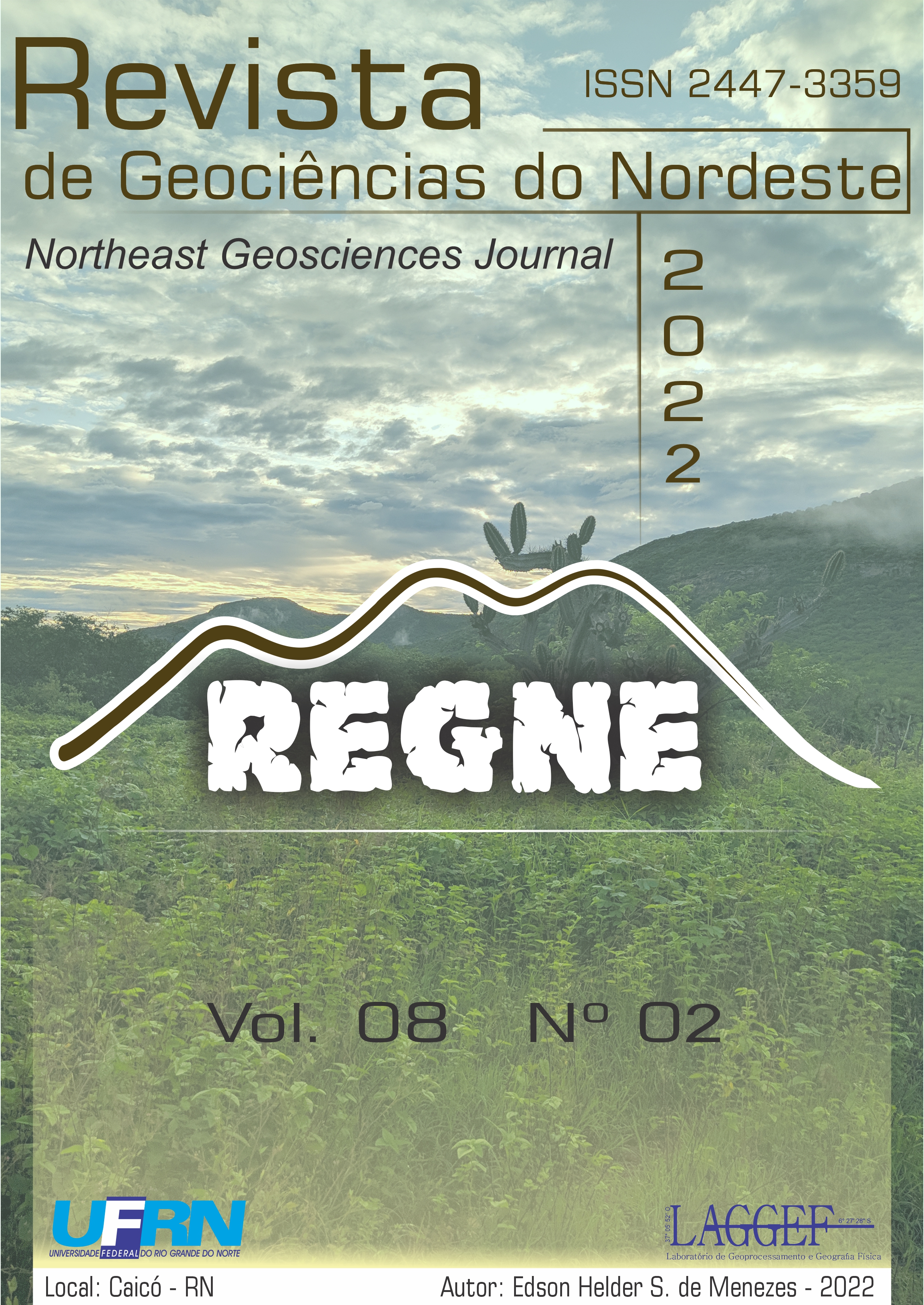Analysis of the correlation between vegetation cover and surface temperature in the municipality of Ji-Paraná, RO, Western Amazon
DOI:
https://doi.org/10.21680/2447-3359.2022v8n2ID27951Abstract
This paper aims to highlight the consequences the disorderly occupation caused on the surface temperature in Ji-Paraná/RO between 1990 and 2020. The research is based on geoprocessing tools, such as QGis v 3.10, Landsat 5 Thematic Mapper (TM), Landsat 7 Enhanced Thematic Mapper Plus (ETM +), Landsat 8 Orbital Land Imager (OLI) and Thermal InfraRed Sensor (TIRS) satellites, obtained by the United States Geological Survey (USGS). Images were used in order to analyze the Vegetation Index by Normalized Difference (NDVI), estimation of Surface Temperature and Land Use Occupation using the Random Forest method. According to the results, Ji-Paraná’s urban area lost 11,77% of native vegetation in comparison to 1990 figures. Moreover, the entropized area grew 58,53%. As a result, the average temperature has rose from 35,03 °C [34,85 °C; 35,22 °C] in 1990 to 47,04 °C [46,82 °C; 47,26 °C] in 2020. It is evident that native vegetation suppression can directly influence the Surface Temperature and population thermal comfort. Therefore, it is necessary to properly implement the current Master Plan.
Downloads
Downloads
Published
How to Cite
Issue
Section
License
Copyright (c) 2022 Revista de Geociências do Nordeste

This work is licensed under a Creative Commons Attribution 4.0 International License.


 Português (Brasil)
Português (Brasil) English
English







